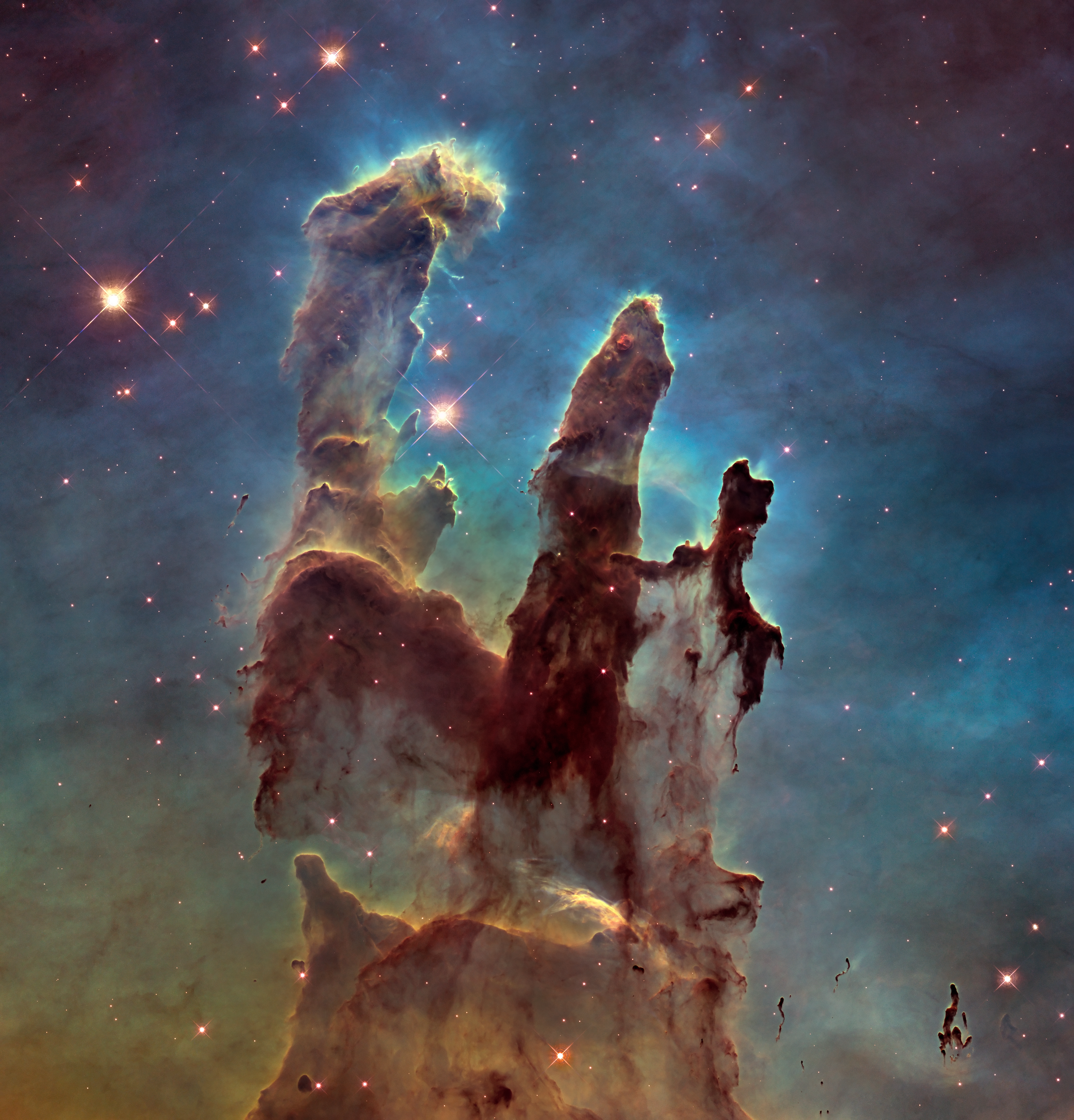|
In the
constellation Serpens is the Eagle Nebula. On April 1, 1995, a picture
was taken of this nebula by the Hubble Telescope, and the results were
spectacular. In the nebula are huge pillars of gas and dust that are
busy forming new stars. These structures were named "the Pillars of
Ceation" because of a sermon -- "The Condescension of Christ" --
made by Baptist minister Charles Spurgeon. National Geographic Magazine
relates the story of the name:
In calling the
Hubble's spectacular new image of the Eagle Nebula the Pillars of
Creation, NASA scientists were tapping a rich symbolic tradition with
centuries of meaning, bringing it into the modern age. As much as we
associate pillars with the classical temples of Greece and Rome, the
concept of the pillars of creation – the very foundations that hold up
the world and all that is in it – reverberates significantly in the
Christian tradition. When William Jennings Bryan published The World's
Famous Orations in 1906, he included an 1857 sermon by London pastor
Charles Haddon Spurgeon titled "The Condescension of Christ". In it,
Spurgeon uses the phrase to convey not only the physical world but also
the force that keeps it all together, emanating from the divine: "And
now wonder, ye angels," Spurgeon says of the birth of Christ, "the
Infinite has become an infant; he, upon whose shoulders the universe
doth hang, hangs at his mother's breast. He who created all things, and
bears up the pillars of creation."
Two pictures of this beautiful bit of God's universe:
The original
1995 Hubble telescope photo. Click to enlarge.

A picture of the
Pillars taken in 2014. Click to enlarge.
|
|

![]()
